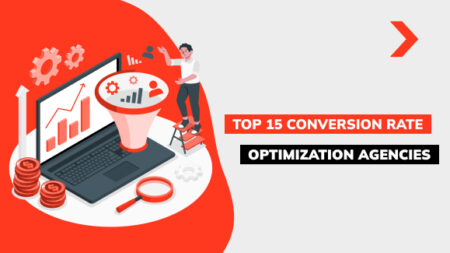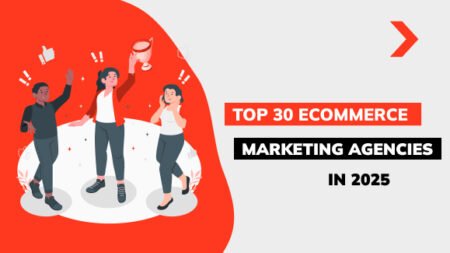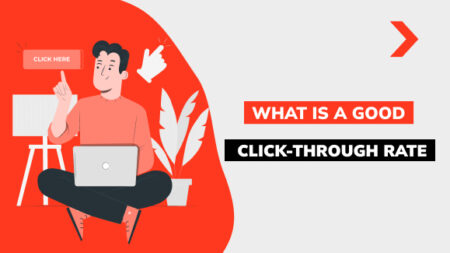Mastering B2B Ecommerce: Trends, Insights, and Strategies for Success
The online commerce sector worldwide has developed significantly because it constitutes a large portion of global trade turnover. B2B businesses strive to grow, becoming strong competitors and active players. Therefore, they engage in wholesale online sales through social media pages, closed and open ecommerce platforms, and other web resources.
Digital transformation is no longer an option; it’s the foundation of how we do business.
Such online sales in B2B ecommerce are very profitable because they bring in more money and prospects. Consequently, every ecommerce site must evolve and implement promotion and optimization methods to become more popular, in demand, and relevant in global and local markets.
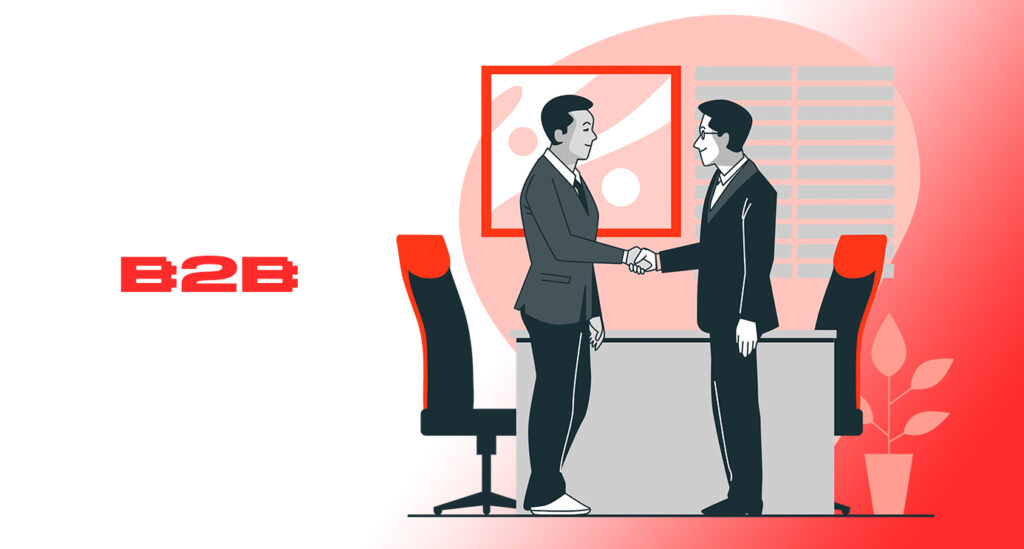
What is B2B Ecommerce?
Today, the online commerce industry stands for selling goods, products, and services from one organization, enterprise, firm, or company to another similar entity. Still, it occurs through online trading (websites, resources, online platforms). Ecommerce business to business (B2B) represents entrepreneurial and commercial activities between legal entities (companies, organizations, conglomerates, enterprises) rather than individuals. The platform format can vary widely, such as a closed web platform for distributors, social media pages, a wholesale hybrid online store, an ecommerce site, or a specific marketplace.
Latest B2B Ecommerce Insights
The digitization of business processes in recent years has influenced relationships between entrepreneurs and retail customers, leading to rapid growth in B2B businesses and ecommerce. Firstly, specialized ecommerce platforms are emerging, and web resources like ecommerce markets are being created. Secondly, each ecommerce platform is geared towards ecommerce business-to-business (B2B) trading operations. Thirdly, recent data on B2B electronic commerce indicates that the leaders in B2B ecommerce are China and America. According to statistics, their online sales amount to trillions of dollars, transactions are always conducted solely online, and every investor strives to invest in their own B2B platform to operate in an online mode.
B2B Ecommerce Trends
This industry follows e-commerce technologies, which have become a standard for serving retail consumers transitioning into the corporate sector. Each ecommerce market, individual B2B-centric platform, and similar web resources are evolving alongside it. Every B2B business has begun or wants to start conducting transactions online and increasing sales on the Internet. Competent marketing tactics, innovative ecommerce technologies, and other promotion, optimization, and promotion methods are being implemented to develop business projects.

- How AI is streamlining B2B transactions
Advanced artificial intelligence technologies have reached a point where they represent a quantum leap for humanity. Consequently, they have positively impacted every aspect of B2B business conduct. Artificial intelligence enables the attraction of B2B customers and partners and the integration of B2B services into projects that help develop and promote businesses on the Internet. With artificial intelligence, digital commerce integration becomes much more accessible, simpler, and faster; it can calculate transactions and much more.
- The potential of voice search for B2B purchases
An exciting technology, voice search, has emerged in B2B ecommerce. Every B2B business strives to implement it on its website. This technology helps simplify B2B customers’ searches for various products and services. Through such marketing tactics, people can quickly orient themselves on a website, find what they want, and make online purchases. With this modern technology, user experience improves, increasing online sales and business revenue and enhancing the online trading process.
- The rise of subscription models in B2B ecommerce
A well-known business model present in B2B ecommerce is a subscription to a company’s website. Every B2B business creates conditions on its website to bring B2B customers closer to it. This is achieved through a business model like a subscription. The technology involves users receiving specific emails to their emails with textual and visual content about promotions, current offers, and other information that engages them in the process of purchasing goods and services.
- The growing focus on eco-friendly practices
Lately, B2B merchants have been paying particular attention to popularizing “eco-movements” among the global population. For each B2B business, it’s time to transition to environmentally friendly development sources. For the global B2B ecommerce, this means a transformation process towards clean, transparent, and environmentally friendly technologies. In turn, B2B merchants have already begun to adopt innovative methodologies to popularize this trend — this is why online sales in B2B electronic commerce have become so relevant that reverting to offline formats means going back several years.
The Future of B2B Ecommerce
For a long time, it was believed that advanced technologies had yet to be placed in the wholesale market, where deals have long cycles and purchasing decisions involve multiple individuals. The cost of error was too high, so the sphere of B2B ecommerce quickly transformed with innovative trends. Additionally, customer experience demonstrates that people find it much more accessible, lighter, and faster to buy goods, products, and services online. All B2B entities must implement current B2B services in their projects, utilize convenient transaction services, and much more.
The B2B buyer is changing; they demand the same ease and speed as B2C customers.
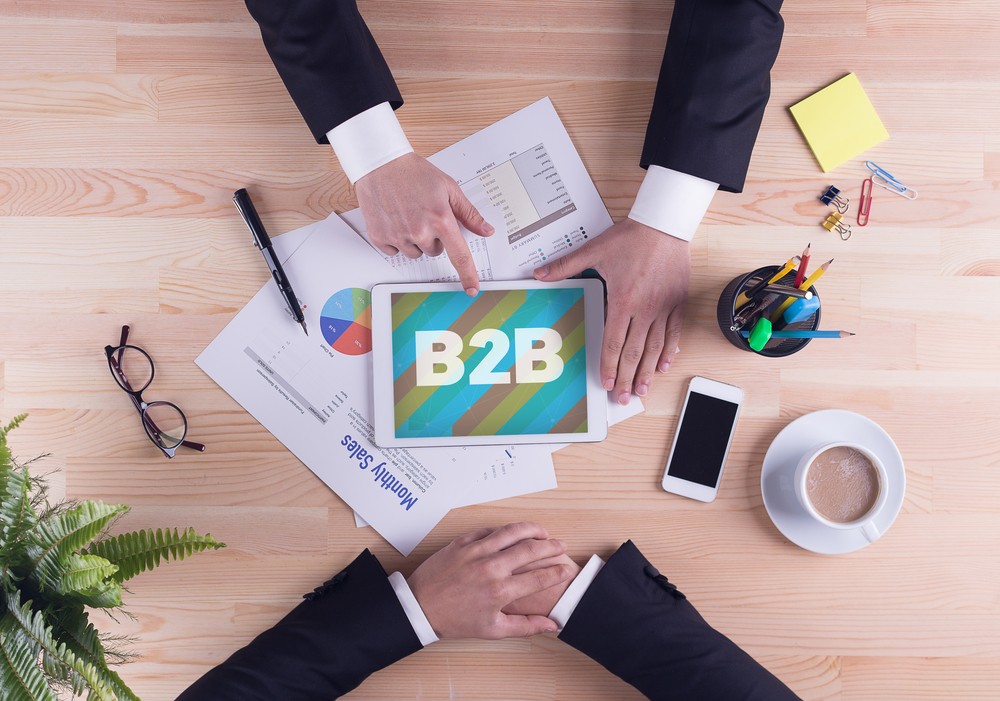
- Emerging Technologies
To develop a business in B2B ecommerce, it is essential to regularly implement new, current, exclusive technologies that emerge in the modern global market. This includes artificial intelligence and nano or know-how that offers B2B online users, which relate to the “eco-movement,” digital process automation through web programs, and so on. As experiences B2B show, transitioning to “digital” will increase trust in business, strengthening its reputation and authority.
- The Role of Marketplaces
As customer experience shows, clients prefer to purchase through convenient platforms where everything is structured, clear, and concise. The role of marketplaces, which represent various types of B2B, involves web platforms that allow enterprises to provide goods, products, and services to other organizations. Laws govern online trading in this segment and help solve such problems for corporate clients as selecting solutions based on evaluations of capabilities and standard conditions of cooperation, and so on.
- Human interaction and building relationships in B2B sales
Experiences in B2B indicate that businesses operating in various B2B e-commerce sectors can only do so with human intervention. Firstly, real experts and professional specialists need to be involved in promoting and optimizing business projects. Secondly, such web resources can only be developed with the help of marketing tools that are manually operated, namely by humans. Thirdly, B2B sellers interact with each other and corporate clients, so it’s not surprising that one can contribute to online sales growth through regular, adequate human communication.
- Security and Data Privacy
Special attention is paid to the security of information and the complete confidentiality of data while optimizing and promoting a B2B ecommerce website. This is important not only for all B2B sellers using a specific online platform but also for all corporate clients who wouldn’t want their personal information leaked onto the Internet. Experts use unique tactics, methodologies, innovative developments, and tools to protect the resources where B2B e-commerce trading takes place to prevent hacking, cyberattacks, fraud, and so on on the business’s web resource.
Understanding the Fundamentals of B2B Ecommerce
The core of B2B ecommerce involves activities aimed at either manufacturing goods or providing specific services. Many business owners understand that digital transformation is indispensable, as the number of individuals leveraging the prosperous opportunities in the B2B online trading space is steadily increasing. Consequently, there are numerous reasons why it is now the most opportune time to implement marketing technologies in B2B e-commerce and outperform competitors, rivals, etc.
How B2B Ecommerce Works
Initially, the buyer explores the online catalog on the store’s website and selects the desired products. Upon placing the order, it is automatically directed to a manager, who then sends a request regarding the availability of the ordered products to the warehouse database. If the product’s availability is confirmed in the warehouse, the administrator continues to process the orders and notifies the buyer, along with a payment request. The online buyer selects a convenient payment method and completes the transaction, sending a notification to the manager about it. Subsequently, logistics personnel arrange for the delivery of the products to the buyer, and a notification of the arrival of the goods is sent in the form of an SMS message.
Types of B2B Ecommerce
In the electronic commerce industry, there are various models of how similar activities could be conducted and what entities are linked with them:
- B2C (Business-to-Customer). This embraces any activity, including advertising products or services, conducted directly among the business and individuals who are the end-users of these offerings. Many B2C organizations market and sell their products through their platform, but many others can bridge intended individuals with sellers via content traffic to sell or limit content to subscriptions.
- B2G (Business-to-Government). Although the majority of organizations focus on customers, BTG refers to the marketing and selling activity of products and services to municipal or governmental institutions. A similar organization constructs buildings, highways, and critical infrastructure, ensures cloud-based software and maintains everything from public squares to headquarters.
- C2C (Consumer-to-Consumer). This business model ensures that customers can make transactions with each other. It is usually conducted on the web through legitimate systems. C2C is typically adopted by online marketplaces or in-person auction houses. Organizations like Craigslist, Olx, or Etsy are considered C2C businesses.
- B2E (Business-to-Employee). That electronic commerce model has commercial relationships with their employees, providing them services like private internal support systems or networks where they can access critical documentation, company updates, and repositories. The main goals and purpose of B2E are to upgrade their employees’ engagement and further retention.
- C2A (Consumer-to-Administration). C2A fosters consumer communication with government or public administrations through a website, online portal, or mobile application. Taxes or filing tax returns, health or scheduling an appointment using an online service, and paying tuition for higher education are all C2A activities.
There is also G2C (Government-to-Citizens), a category of e-government that opts for mutual actions among the government and its citizens to support transactions like tax payments, various licenses, and passport obtaining. This electronic commerce model grants access to government information via online services.
Stages of a B2B Business
Running a B2B company is based on a series of stages linked together. Firstly, the consumer selects a product and submits a purchase request. Then, an administrator reviews this request and confirms the product’s availability in stock to the buyer. Next, the consumer receives a message requesting payment for the product through their preferred method. After the product is paid for and an electronic receipt is sent, employees at the company’s warehouse begin to package the goods. Once this is done, the company dispatches the product to the buyer through a logistics service, informing them via SMS or email. Upon delivery, the consumer inspects and collects the product at the delivery service.
B2B Ecommerce Payments
These are transactions in which an organization pays a particular customer, including refunds, rebates, insurance claims, and wages. B2C payment is required when attempting to order a jacket on the online marketplace, paying for groceries, or signing up for a training program via a digital gateway. Transactions occur in the supply chain when one business acquires initial supplies from another to be used in the production process. B2B commerce solutions could manage multiple digital payment methods in a single field, resulting in faster processing and better payment tracking. Payment software could also automate bookkeeping and invoicing; it’ll lower the human factor risk.
Data Analytics in B2B Ecommerce
Forecasting analytics in this field rely on historical data to predict future trends and a client’s habits. Predictive models can effectively manage inventory, target markets, and revenue. To exploit predictive analytics, you must have consistent data, proper software, and a defined strategy.
Analytics in B2B reviews the data you’ve obtained and insights that reflect your marketing productivity. They can also help you enhance marketing and sales strategies by generating leads, analyzing funnels, retaining customers, and locating growth channels.

Understanding Customer Behavior Through Data
In the B2B and B2C industries, tracking customer metrics could help your organization grasp its purposes and further ensure improved service. This way, you should collect data on clientele demeanor, majorly how they behave on the web; it helps you to analyze that data to get insights into what motivates your B2B buyers to behave in specific ways. With the critical information obtained firsthand by studying clients’ habits, B2B firms can comprehend why they behave as they are online. It’s now evident why specific marketing strategies and initiatives are working while others aren’t.
Implementing Analytics Tools for Performance Tracking
Tracking these points entails measuring and analyzing data to optimize digital marketing operations. The most famous platforms are Google Analytics, Adobe Analytics, and numerous social media platforms that gather data. Regular reporting helps to track progress and convey results to stakeholders. Customized dashboards and reports can highlight your KPIs to show how effectively your digital marketing initiatives are operated clearly. Businesses may use data insights to make better decisions, improve their strategy, and drive growth.
Data-Driven Decision-Making in B2B Strategies
With so much data, organizations may need help correctly integrating data-driven decision-making in their B2B marketing journey. That entails more than just statistics and numbers — it explains how to use data to make meaningful and more informed decisions. Those prioritizing staying ahead in the crowded market and expanding their brand reach must employ innovative and analytical marketing strategies. Your B2B business could use data to identify hidden potential customers, monitor the performance of your marketing activities, and drive corporate growth.
Elevate Your B2B Ecommerce Strategy with Elit-Web
To enhance the business management strategy, it is necessary to turn to the best and most experienced specialists from Elit-Web. Professionals will be able to create highly beneficial and ideal marketing proposals, identify the core values of the target audience, conduct a deep analysis of the website, and understand what to focus on and what to eliminate. For effective operations in the B2B sphere, attention should be paid to website audits, competitor analysis, clearly structured step-by-step actions in the strategy, and relevant solutions. Only experts can handle this effectively.
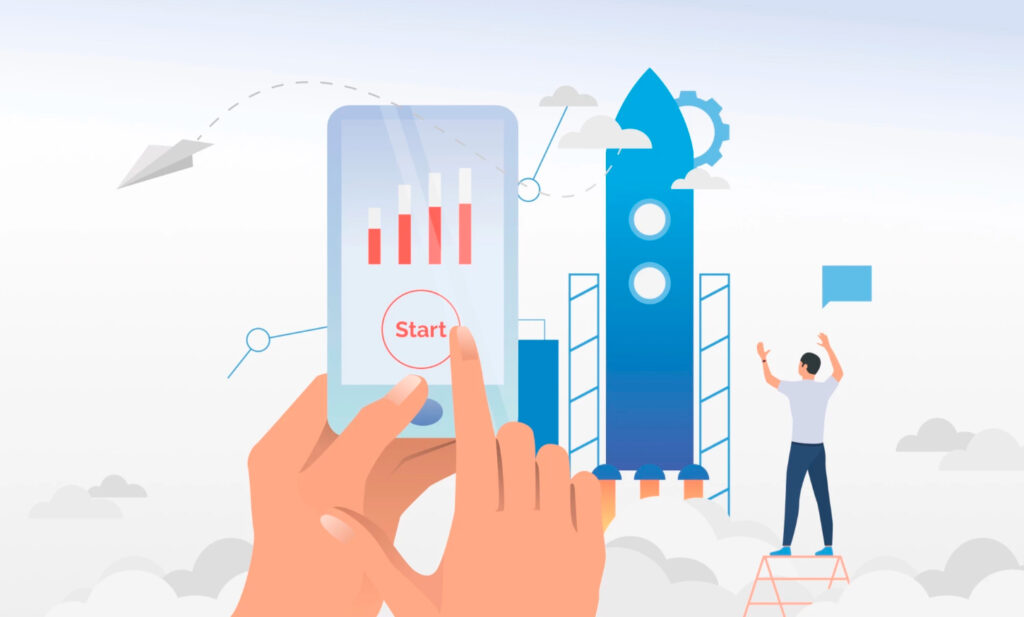
B2B Ecommerce Marketing Tactics
For any business, it’s important to implement all marketing tactics comprehensively to achieve the best results. First, an intensive advertising campaign should be conducted, followed by expanding the range of products according to audience needs. Then, it’s worth considering expanding the range of services and goods. It’s also vital to hold special events to stimulate staff (online managers, online administrators, etc.) to serve corporate clients better. Promotions, special offers, and much more can be utilized.
Manufacturer vs Distributor
Manufacturers and distributors have long passed the stage where data uploading with secondary online sales is a shared task. A supplier representative in a specific territory can provide secondary sales to the distributor, who can deliver them to the end consumer. This fulfills the procurement plan and ensures that trade meets all distribution standards. Both sides genuinely benefit from mutually beneficial cooperation.
B2B Ecommerce Challenges
One of the current problems for businesses operating in the B2B model is the urgent need for digital transformation. Integrating one’s brand into the digital environment is the best and most reliable solution, given the active flourishing of the Internet space. It is sufficient to develop a competent strategy with well-defined objectives. It’s important to remember that demand for practical marketing tools is only increasing. Therefore, to ensure that a business does not lag and can compete fully with its rivals in the market, it is necessary to focus on promoting and optimizing its website on the World Wide Web.
B2B SEO Strategy
By seeking help from the Elit-Web team, there’s no need to worry about a well-thought-out, clearly planned, and skillfully structured SEO strategy. It is developed specifically for specific queries and business tasks. Moreover, it is created by specialists and experts on an individual basis. The strategy is fully competent, step-by-step, and qualified. It outlines all the detailed steps necessary for digitalizing a business’s web resource (regardless of industry and activity) on the Internet for its rapid promotion and popularization.
| Aspect | Trend/Insight | Strategy |
|---|---|---|
| Digital Transformation | Shift to digital-first buying processes. | – Invest in robust eCommerce platforms. – Automate workflows. |
| Personalization | Buyers expect tailored experiences. | – Use AI for personalized recommendations. – Segment customers by needs. |
| Self-Service Portals | Demand for ease of ordering and account management. | – Offer online portals for reorders and tracking. – Simplify navigation. |
| Mobile Optimization | Increasing use of mobile for B2B purchases. | – Ensure mobile-friendly design. – Optimize for mobile search. |
| B2C-like Expectations | Buyers want fast, seamless experiences. | – Implement quick checkout and real-time pricing. – Provide live chat support. |
Get Expert Guidance
Ordering promotion services from specialists allows you to receive expert guidance on online business promotion. B2B integration primarily offers the opportunity to automate processes in wholesale online trading. When orders are placed through a web resource, managers must perform many actions manually. With a semi-automatic process, part of the workload is lifted from managers, making them more accessible and thus easier to work with and monitor and control everything happening. The need to manually perform actions related to online sales nullifies the advantages of having your own B2B platform.
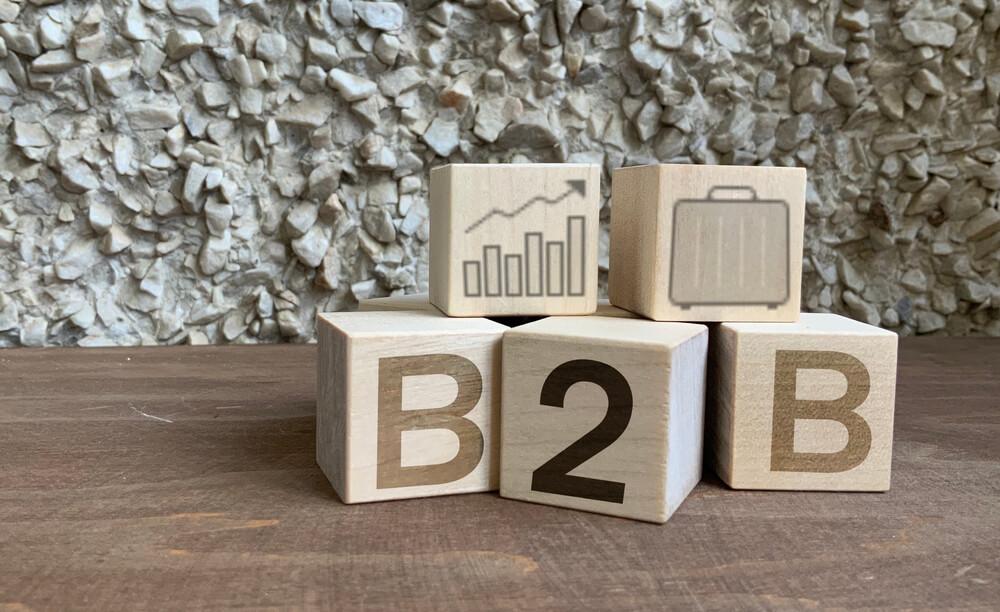
B2B Ecommerce Trends
Among the current trends worth highlighting are marketplaces, domestic software, individual relationships with corporate clients (legal entities), and the presence of user web platforms and knowledge bases. It is also crucial for business management to implement trends such as analytics, machine learning, artificial intelligence usage, alignment of marketing and sales, real-time messaging, subscription model implementation, and voice search technology. Hiring only one online seller for different online platforms may be feasible, which will save the business budget.
Industrial Ecommerce
E-commerce in the industrial sector is not only about accelerated communication between customers and suppliers but also an opportunity to reduce costs and improve collaboration efficiency by creating a direct online channel with consumers. It involves direct contact between sellers and consumers, enabling regular work to increase the competitiveness and productivity of enterprises, firms, organizations, and companies. Moreover, it eliminates the need to hire many employees because implementing marketing tools promotes automation and simplifies business processes. By implementing an online service for trading, manual labor can be optimized, more relevant prices can be set, and a higher standard of customer service can be achieved.
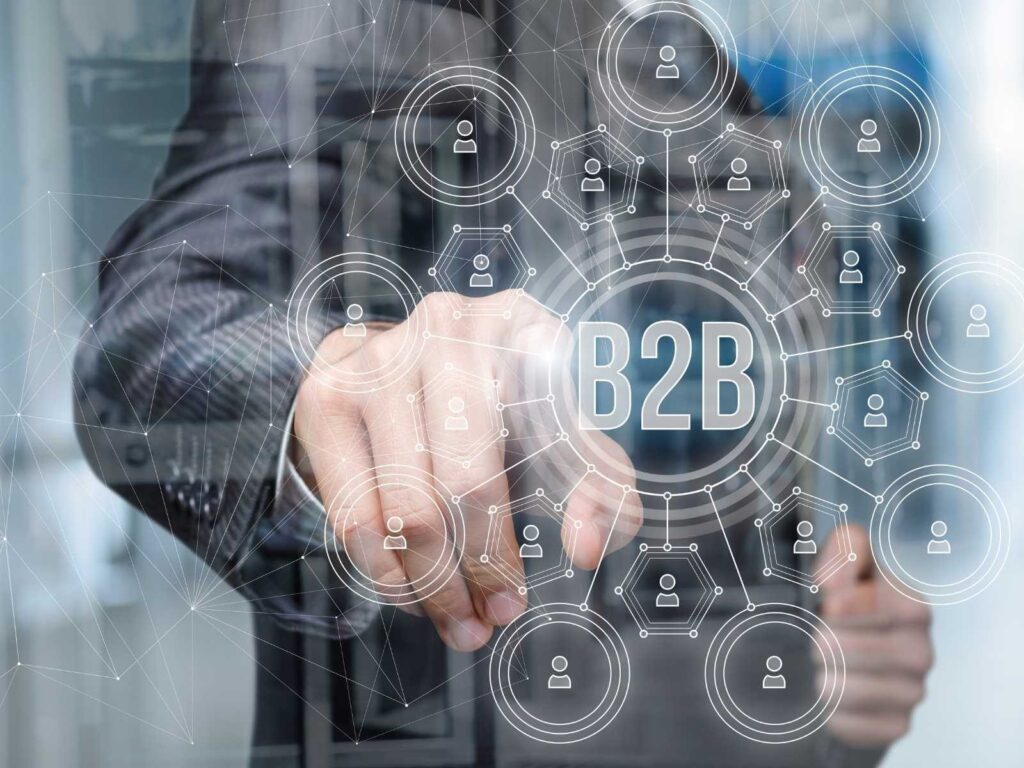
FAQ
What is a b2b ecommerce business?
B2B (business-to-business) refers to trading relationships between legal entities. They aim to produce goods, products, and services for other businesses rather than individual consumers. In simple terms, these enterprises (or their divisions) sell their goods, products, and services to corporate clients — other corporations, firms, and organizations. Customers conduct business in the B2C (business-to-consumer) market through these acquisitions.
How does b2b ecommerce work?
B2B e-commerce operates through specialized online platforms where legal entities can order goods, services, and products. Essentially, the buyer browses the online catalog, and their portable or other device (tablet, laptop, smartphone) interacts with the server hosting the online store through a web browser. When the server receives an online order from the client, it forwards it to a manager for order processing. The manager then confirms whether the product is in stock and requests a financial transaction (the client must pay for the goods and send the check to the manager). Then, warehouse employees gather the goods, package them, and send them to the end consumer through the selected logistics company, notifying them via SMS or online email.
What is difference b2b and b2c in ecommerce?
B2C or “business-to-consumer” operates on a simple scheme where the selling company generates revenue from selling goods, products, and services to end consumers (individuals, ordinary people). Online trading essentially occurs through regular B2C transactions (sellers in this segment have a large flow of customers but small individual order amounts). On the other hand, B2B or “business-to-business” involves commercial activities where both parties (buyer and seller) are legal entities, and online sales transactions occur through entrepreneurial transfers (special accounts for entrepreneurs).
How to choose a b2b ecommerce platform?
Modern enterprises, organizations, firms, companies, and corporations have increasingly used digital and marketing technologies. Therefore, to choose the best online platform, it is crucial to consider factors such as ease of order placement, speed of request processing, quality of service (availability of online chat, ability to respond to emails quickly), voice and visual search, availability of a mobile web application, website adaptation to portable device screens, convenient payment systems with minimal or no commissions, the ability to order products or goods online with free delivery, and more.
How to start a b2b ecommerce business?
To enter the B2B market, several important factors need to be considered. Firstly, it is essential to monitor competitors and find out how they conduct their business, where and how they present their products, what content is posted on their website, what their pricing policy is, and the terms under which online transactions are made. Secondly, it is necessary to segment potential consumers depending on the types of preferred products or services (solving buyers’ problems, improving service, etc.). Thirdly, it is essential to determine the value for customers who need your product (each of them sets specific tasks for the products). Fourthly, barriers to online purchases for the customer must be identified (it is necessary to eliminate lengthy discussions, excessively high prices, hidden price tags, etc.).


